Round nose pliers: features and characteristics of models
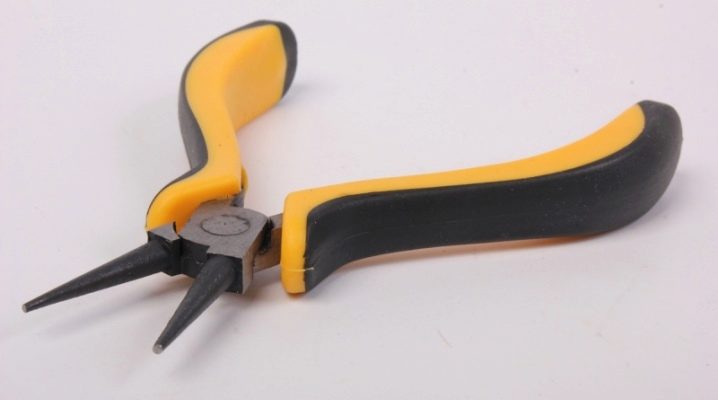
Round nose pliers are a typical member of the pliers family and are used in various fields of human activity. Products have a rather narrow specialization, so they cannot be used in repair, construction and assembly work, such as pliers.
What it is?
Round nose pliers are classic pliers, which are equipped with elongated round lips, connected to each other by means of a movable hinge. They are referred to as hand-held fitting and assembly tools, and if there is insulating material on the handles, they are also referred to as electrical installation tools. Round nose pliers are available in a wide range of sizes, with different lip lengths and diameters. This allows them to be used to form roundings of the desired diameter by mechanical twisting relative to the lips. Semicircular pliers are also classified as round-nose pliers - forceps, in which the inner part of the lips has a flattened shape.
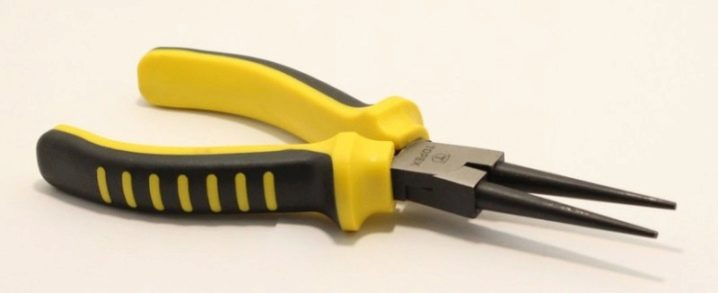
According to GOST, on the inside of the working surfaces, in places from contact with each other, special grooves should be notched. They are designed to better grip the tool with wires and cores, ensuring their secure fixation and avoiding slipping. The only exceptions are round nose pliers for jewelers. For technical reasons, such a tool should be absolutely smooth, since the presence of grooves when performing especially delicate work can greatly interfere.
Varieties
Round nose pliers are classified according to three criteria.

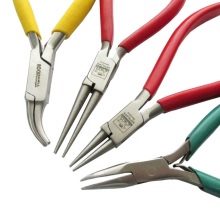
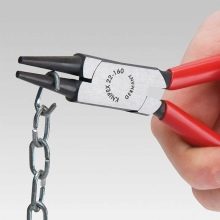
Purpose of the tool
On this basis, the tongs are divided into two categories: fitter and wiring models. The first ones do not have a special insulating coating on the handles, therefore they can be used exclusively for work not related to electricity.
Electrical installation samples are equipped with such insulation and are the main tool of electricians.
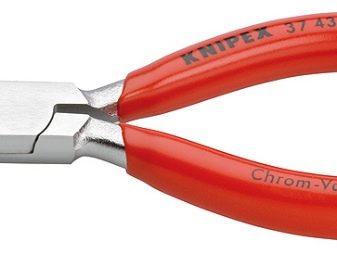
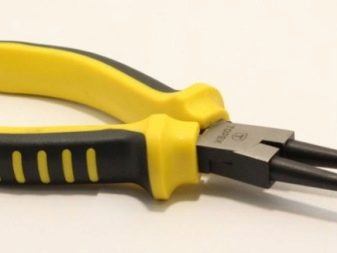
Form of working parts
According to the configuration of the working part, round-nose pliers are divided into two types.
- First view represented by instruments with tapered lips tapering towards their tips. The advantage of conical models is a wide range of applications, and the disadvantage is the impossibility of forming a spring with coils of the same diameter, since with each subsequent coil its diameter will decrease.
- Second kind represented by models with cylindrical lips having the same cross-section along the entire length. The downside of cylindrical models is their too narrow specialization, in comparison with the conical type, and the ability to wind turns of only one size. But when forming a spring of the correct cylindrical shape, such a tool is simply irreplaceable.
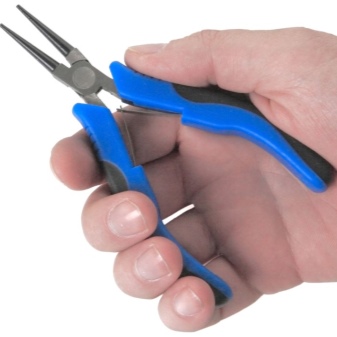
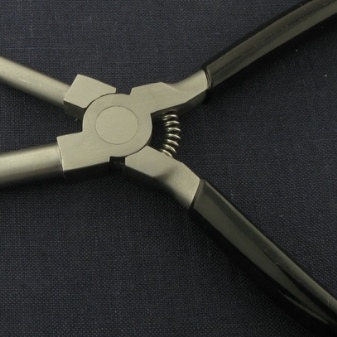
The tips of the lips of both the first and second types can be straight or curved. This allows you to work in hard-to-reach places, where it is physically impossible to get close with a tool with straight lips. Such models are often used by jewelers, performing especially delicate work with them. The tool jaws can have the same diameter or differ significantly in size.
The tool with different size lips is very easy to use and allows you to form curves of different diameters.
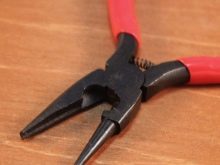
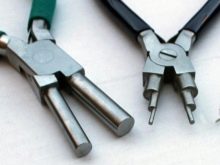
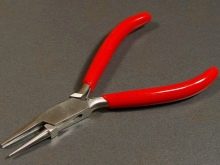
The size
The dimensions of the section of the working lips are clearly spelled out in the state standard and are measured in millimeters. The diameter of the jaws in various combinations can be 180, 160, 140 and 125 mm. Foreign models can be produced with a diameter of 135 mm.
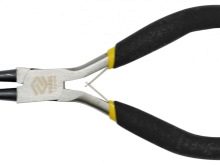
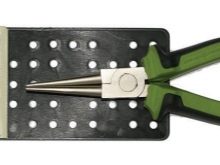

What are they for?
The scope of use of round nose pliers is quite wide. With their help, it is possible to perform a point capture of wire, metal strands and rods, as well as to carry out their uniform bending. The tool is widely used for removing retaining rings, bending narrow metal plates and working with electrical wires. Work with high-voltage networks is performed with pliers equipped with a dielectric handle capable of withstanding up to 1000 V. For work with a low-voltage network, round-nose pliers equipped with an insulating winding are sufficient.
Round nose pliers are often used in sappers and jewelry, and are also used to wind springs. And also with their help, you can make various decorations for the interior and exclusive jewelry.

Models and their characteristics
The modern market for locksmith and electrical hand tools represents a huge variety of products, both domestic and foreign. Below are the most popular of them, which have a large number of approving reviews, which means they are in high consumer demand.
- Swedish brand Bahco model 2521G-140made in France, equipped with tapered jaws and is suitable for all types of work with wires and wires. For the manufacture of lips, high quality alloy steel, oxidized, is used. Thanks to this coating, the risk of corrosion is completely excluded. The tool is equipped with two-component Ergo handles made of polypropylene and covered with anti-slip thermoplastic pads. The design of the model includes a return spring, equipped with an on / off option, which greatly facilitates the use of the tool. Thanks to its expanding action, the jaws are automatically retracted to the opposite position, which is sometimes extremely necessary when performing particularly delicate work. The product does not have a dielectric coating, therefore it is not intended for electrical work. The weight of the model is 120 g, the length reaches 15 cm, the width is 5 cm. The cost of the product is 1,785 rubles.
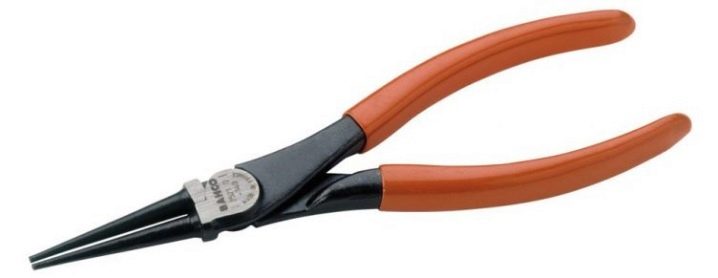
- Round nose pliers of the Mexican brand Truper PM-PR4 17370made in China have elongated cone-shaped jaws, for the manufacture of which a chromium-vanadium alloy is used. This ensures high strength of the working surfaces and allows you to work with thin metal. The product is equipped with a two-component handle without dielectric insulation, has a length of 120 mm and costs 424 rubles.
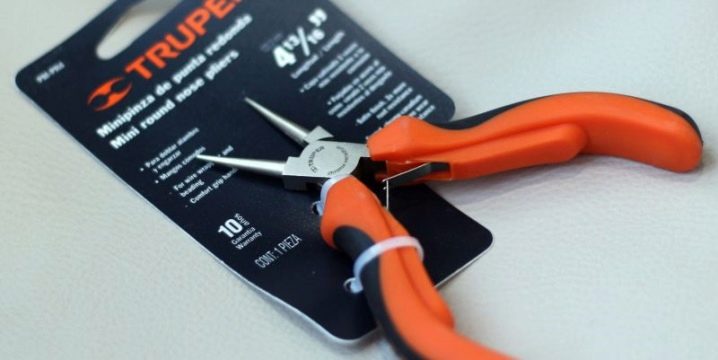
- Model of the German brand Sturm 1030-04-4-125 produced in China. It is intended for gripping, winding and cutting wire, wires and cores. Jaws with curved ends have a chromium-nickel coating, thanks to which they do not rust and can be used in high humidity conditions. The length of the product is 125 mm, the cost is 170 rubles.
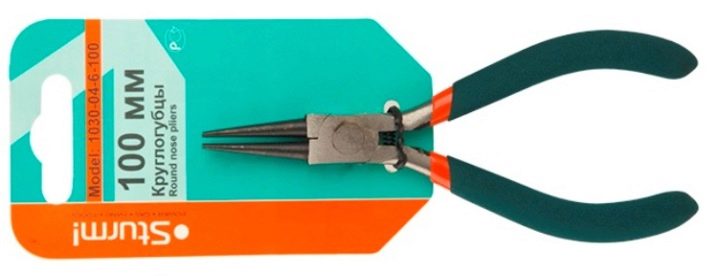
The tool of the domestic brand "Zubr", the "Electric" model is made of high quality durable steel and is designed for high-voltage work with voltages up to 1000 V. The cutting edges of long jaws undergo additional high-frequency current hardening and have a very long service life. The lip surface is phosphated, and the handle is made of dielectric material and is equipped with stepped protective lugs. This design provides complete safety and reliably protects the hand from high-voltage wires. The length of the product is 160 mm, the cost is 370 rubles. The model is produced in accordance with GOST 11516-94 and has the article 2214-8-16 z02.

In addition to the samples presented, the products of the German company Gross and the Polish NEO are in high demand.The companies have been specializing in the production of pliers for many years and produce both classic round nose pliers and flat samples. The cost of models of these brands varies from 700 to 1800 rubles.
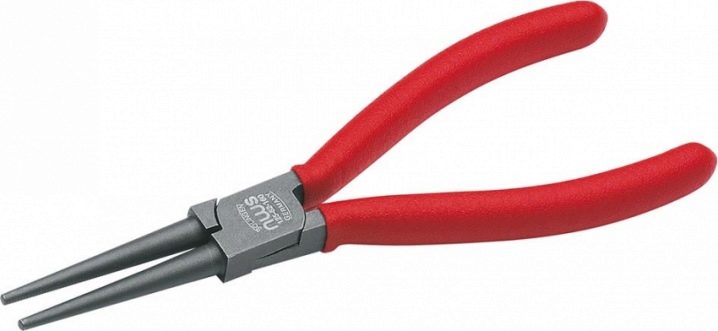
Subtleties of choice
When choosing a model of round nose pliers, you should pay attention to a number of significant factors, directly or indirectly affecting the convenience and safety of using the tool.
- First of all, you need to determine for what type of work the product is being purchased. So, for use in a jewelry workshop, you should choose models with thin long lips of a straight or curved shape.
For particularly precise work, cone-shaped models with an absolutely smooth surface that have no notches are well suited.
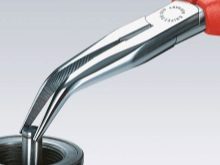
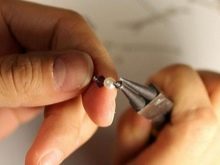
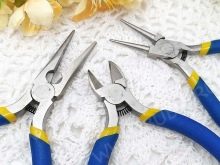
- Particular attention should be paid to the presence of an insulating layer, remembering that when working with high-voltage wires, the handle must be completely made of dielectric material, while an insulating braid will be enough for working with low-voltage networks. Moreover, the handles of electrical tools must necessarily have special stops that limit the sliding of the hand to the jaws in contact with electricity.
- And you should also pay attention to the quality of the main elements of the tool. It is necessary to make sure that the jaws fit tightly, as well as that their dimensions are identical, with the exception of combined models. In addition, you should make sure that both jaws open in the same plane without movement or distortion.
- The next selection criterion is ergonomics. Before buying, you need to hold the instrument in your hand and evaluate how accurately it repeats the anatomical shape of the palm. This is especially true for models purchased for particularly precise and delicate work, for example, for sappers or jewelry.
- It will be useful to pay attention to the presence of a spring-return mechanism. Its presence is especially necessary when working with one hand, when the other hand supports the part or simply does not fit into the confined space.
For professional use, it is recommended to purchase tool kits, which, in addition to combined models of round nose pliers, include long nose pliers and long nose pliers.
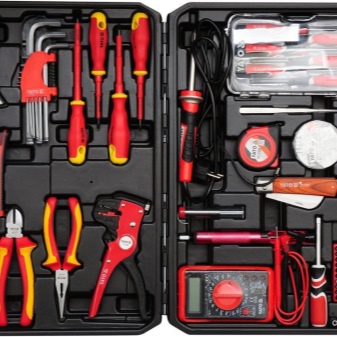
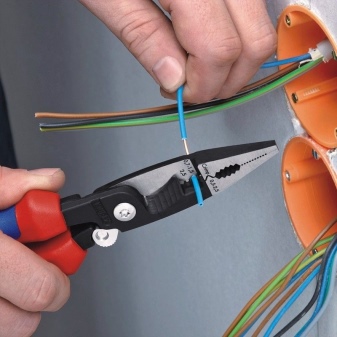
Usage Tips
In order to work with the tool comfortably and safely, the following simple rules should be followed:
- before using tools that are not equipped with dielectric protection, you must make sure that the wire is de-energized;
- when working with round-nose pliers, the handle must be gripped from above, otherwise there is a risk of pinching your fingers;
- if there are no electrical models available, but you still need to fix the wiring, then you can use insulating tape by wrapping both handles in several layers with it; but you can only use a tool with such insulation on low-voltage lines;
- it is strictly forbidden to use round-nose pliers for their intended purpose - it is strictly forbidden to pull nails from the walls with their help, because this can lead to hand injury and breakage of the working parts of the tool.
For how to use the round nose pliers, see the next video.













The comment was sent successfully.